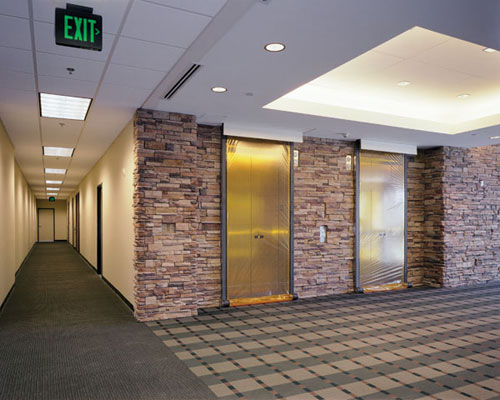Design Alternatives to the Enclosed Elevator Lobby: Fire and Smoke Safety Solutions
Learning Objectives:
- Explain the building code requirements for fire and smoke containment at the elevator shaft.
- Describe the enclosed elevator lobby solution mandated by the IBC.
- Compare and contrast available alternatives to the traditional enclosed elevator lobby solution.
- Describe unique fire and smoke code requirements and solutions for areas of refuge, countertop enclosures, healthcare facilities, and prisons.
Credits:
Smoke and Fire in the Built Environment
The National Fire Protection Association (NFPA) reported that in 2010, in the United States, there were fires in 90,500 apartment buildings, 12,000 public assembly properties, 5,500 educational properties, 5,500 institutional properties, and 18,000 stores and offices. 555 civilians died in these fires and over 6,000 were injured. Property losses in these fires exceeded $2.2 billion. While these tragedies occurred during a fire, the real culprit was the smoke. According to FEMA, asphyxiation is the leading cause of fire deaths, exceeding burns by a three-to-one ratio.
Both evidence and experience confirm that buildings must be designed to protect occupants from fire and smoke, but debate continues to rage about the best way to provide that protection. Active fire suppression systems, such as automatic sprinklers, have proven to be very effective at containing the spread of fire throughout a building, but do little to combat the creation and spread of dangerous smoke. Passive fire protection systems manage fire spread by dividing a building into distinct fire containment compartments equipped with fire-rated floors, walls, doors, door hardware, and duct penetrations. These passive systems act to restrict the movement of smoke. Walls serve as smoke barriers keeping the smoke from migrating into other parts of the building, but smoke easily maneuvers around ungasketed fire-rated doors and into open space.
The International Building Code (IBC) is the most widely adopted building code in the United States, providing a single set of comprehensive and coordinated construction and design codes that guide the development of projects nationwide. "In terms of fire and life safety, the general goal of the IBC is to ensure that if a fire occurs in a building, it won't grow too rapidly and occupants will have the ability to escape," explained fire code consultant Gregory J. Cahanin, Cahanin Fire and Code Consulting. "In a multi-story building, the IBC mandates that automatic sprinklers be installed to contain the spread of fire and works to compartmentalize every floor, so that if a fire occurs, it stays on the floor where it began."
 |
|
Shown here: rolling magnetic gasketing system. Photo © Brett Drury Architectural Photography, Inc. |









